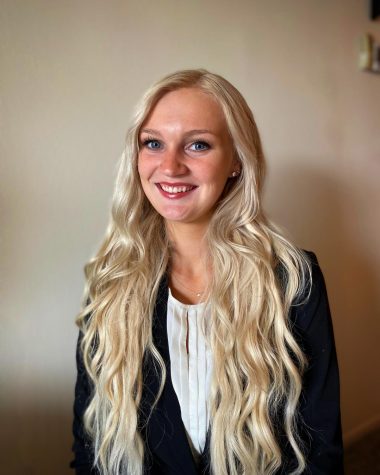GVSU students shoot documentary in Alpena, Michigan
Aug 28, 2017
Exploring new places, recording with drones and filming people on kayaks. These are all activities that six of Grand Valley State University’s film students had the opportunity to do when they traveled to Alpena, Michigan, with their professor to make a documentary.
“Our goal was to gather footage from the Alpena area and to make short, story-driven documentaries highlighting the beauty, history and community of Alpena,” said film student Elizabeth Herrud.
The film students and professor went on this trip the week of Monday, June 12, collecting many different angled and scenic shots for their interactive film. The group went to Alpena because a GVSU film and video alumnus, who now works for the National Oceanic and Atmospheric Association (NOAA), had done work at the Thunder Bay National Marine Sanctuary in the past.
“We had connections there, and they were willing to help us create video content about the shipwrecks and maritime history up in Alpena,” said former film student Erika Collin.
One of the main focuses for professor John Schmit when it comes to helping improve his students’ learning is coming up with creative topics that make it more engaging for them. The quality of their work matters, too, so to help ensure that their shots stand out, he has his students review their film.
“Each day started with meetings to go over the locations, activities and shooting plan,” Schmit said. “We piled into our van and headed out to film all day, sometimes driving to several locations throughout the day. In the evening, we gathered together and watched our footage to see how it came out.”
Students were able to film in ways they never had before. The shots they took were close up and in action. They filmed the Great Lakes Maritime Heritage Center, interviews with the sanctuary employees and visitors climbing the lighthouse, and people on paddle boards and in canoes and kayaks.
“Filming in all different environments can be challenging, but learning from experiences is always best for me,” Herrud said.
To help students capture these astonishing shots, Alpena Community College media instruction development technician Gary Hollingsworth used a drone. With the help of ACC allowing them to use these drones for their film projects, the GVSU students were able to capture aerial footage that included better quality shots than ones from the normal camera. This way, they could get shots over lighthouses, as well as views you wouldn’t typically see in every film.
They also had a drone van that was at their fingertips with the help of ACC. This helped lengthen the time they could film because they were able to easily recharge batteries. Some students were looking at footage while it was being filmed to improve its quality.
In Alpena, there have been hundreds of shipwrecks up in the Great Lakes that occurred in the 1800s during trading, and the GVSU students had an opportunity to film a couple of these shipwreck sites.
“We visited two shallow shipwrecks along the shore that are part of the protected history of the sanctuary,” Schmit said. “Several of us snorkeled over the wrecks and gathered underwater footage.”
In addition to producing their footage, the students also became closer throughout the trip.
“It was awesome being able to get to know my peers better while also gaining experience about documentary filmmaking,” Collin said.
For Collin, the experience of filming in Alpena was unforgettable.
“We had an awesome and extremely educational experience up in Alpena,” she said. “The town is so united. Everyone welcomed us with open arms and were really excited that we were there to learn about their maritime history.”
This fall, the students will be editing their footage, and they plan to launch their interactive documentary on the web for public viewing.























